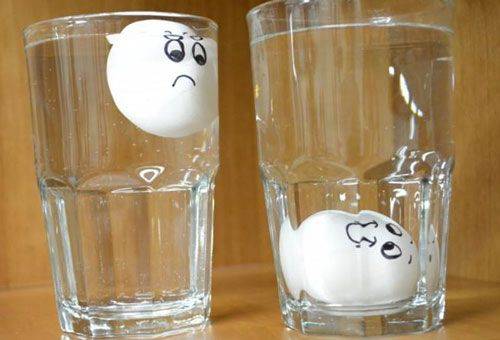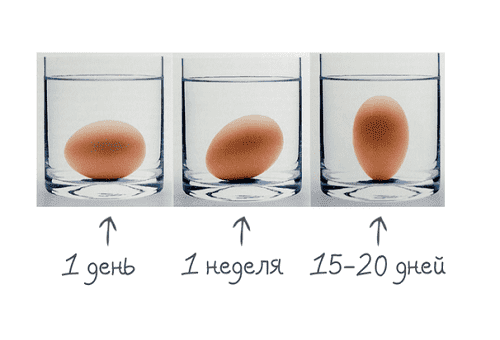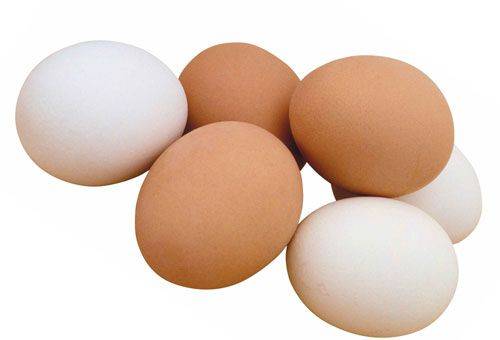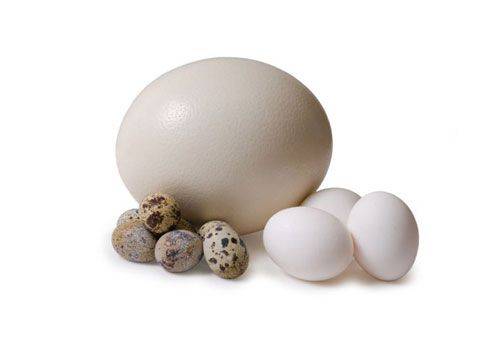Methods for checking the freshness of chicken and quail eggs
Content:
Chicken eggs are deservedly popular among residents of different countries, due to their nutritional properties and a set of valuable components. But only if you know how to check the freshness of eggs, you can really count on getting the desired benefits without the risk of food poisoning.
Today, urban residents mainly eat eggs for food. Despite the fact that their packaging usually has an acceptable shelf life, experts recommend arranging additional checks for the products. To establish the quality of the product is not difficult at all, you just need to adopt the authorized tools and trust your own care.
Check chicken eggs for freshness in water and light?
If it is necessary to determine the degree of freshness of a product that is already at home, it is easiest to do this with water. This is an affordable and reliable option that allows you to pretty accurately determine the life of the egg. The approach is due to the structure of the food component. Under the shell is a two-layer shell that freely transmits light, moisture and air, but only unilaterally. As a result, in one of the poles a pug is formed - a part filled with air. The older the egg, the larger the unique formation.
For the experiment, we simply fill a deep container with water (at least 10 cm) and lower the food product into it. Fresh product will remain at the bottom of the bowl. Chicken eggs that are more than a week old come off with a blunt end from the surface. If a sample floats to the surface of the water, then it is hopelessly rotten and it is already at least a month old.
Tip: Some housewives advise adding salt or sea salt to the water, citing the fact that the result will be more accurate. In practice, no difference is visible, only unnecessary damage to the product occurs.
In addition, there is another method for determining the freshness of an ingredient using pugi. The experiment can be carried out not only at home, but also in the store itself. We select one sample and carefully examine it through a bright lamp with a power of at least 100 watts.
One should try to consider the presence of a film at the blunt end of the subject. In a dietary ingredient, the clearance should be no more than 4 mm, in the dining room a pug up to 8 mm is allowed. Chicken eggs, in which this cavity is larger, are considered stale.
If you know what signs to look for during the scrolling of an egg, you can learn a lot of interesting things about the product:
- The yolk should be strictly in the center, only a slight displacement is allowed. If the component is nailed to the shell or its edges are so blurred that it is difficult to determine anything, the product is spoiled.
- The formed embryo in any form is unacceptable.
- Spot blood spotting is acceptable. If a clot forms a ring, it is best to discard the ingredient. Even heat treatment will not improve its quality.
- The presence of dark spots is a sign of microbes entering the main chamber. Such chicken eggs often cause food poisoning.
- Sometimes a pink tint appears in a protein even in the light, while the yolk appears red-orange. These are the consequences of blood entering the chamber. There will be no harm from such a product, but also a minimum benefit.
In addition, there are no less informative and reliable methods for determining the quality of eggs.True, their use is useful only with frequent work with the component, because in most cases the product will need to be compared with its optimal condition.
Other product quality control options
These methods should become a habit and it does not matter if chicken eggs are evaluated in the store or their quality is specified before cooking at home:
- Consider the surface of the shell. The fresh component is a little rough and dull. Mature and old products lose these signs, standing out as a smooth shell with a sheen and a bluish tint.
- Next, squeeze the ingredient a little to feel the slight vibration of the contents and shake it. Fresh product does not roll inside the shell and is almost not felt. If inside the egg something shimmers and flounders, then it is better not to use it.
- Even a product that has passed all stages of verification may be of poor quality. This will become clear after removing it from the shell. Firstly, fresh eggs have no smell. If you feel at least some notes, you should think about the safety of their use. Secondly, the protein of a fresh egg is more like jelly than liquid and does not spread over the entire plate. The yolk must be elastic, strong, rising above the surface of the protein.
It happens that even those components that meet all of the above requirements, after heat treatment, acquire a specific pungent smell of hydrogen sulfide. This is the result of an incorrect assessment or imperceptible propagation of microbes. The ingredient is not to be consumed, it will have to be discarded.
How to quickly check the freshness of quail eggs?
The rapid growth in the popularity of quail eggs is due to their dietary properties and pleasant taste. Despite the fact that this product is quite expensive and sellers pay special attention to it, it is better to be careful and conduct a mandatory quality assessment.
In the store, you can do the following:
- We find the control scales of increased sensitivity and weighed a couple of quail eggs from the experimental box. The weight of one ingredient should be about 12 g. The older the product, the lighter it becomes.
- If there are no suitable weights, you can compare several boxes and take the heaviest.
- After that, be sure to inspect each instance. It is better to refuse quail eggs with cracks or damage on the shell. Even a microscopic gap will be enough for bacteria to enter and spoil the contents.
Already at home, it is imperative to conduct a test with water. Quail eggs are subject to the same rules as chicken eggs. After that, we break the products and evaluate the state of the contents of the shell. The yolk is not necessarily inside the protein; it may be next to it. The main thing is that the components keep their shape and do not spread.
Chicken and quail eggs, even in their dietary stage, are considered allergens. Over time, sensitizing properties only increase, so children and the elderly can only eat the freshest foods. But even adults should not take the risk of trying to improve the quality of the dubious component by heat treatment.




